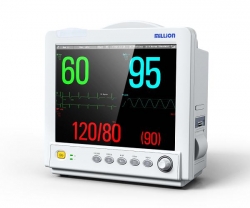Wechat QR code

TEL:400-654-1200

TEL:400-654-1200
Do you know what to pay attention to in the use of the automatic analyzer?
The biochemical analyzer is the main method of medical clinical chemistry detection integrating electronics, optics, computer technology and various biochemical analysis techniques. For a biochemical analyzer, the higher the degree of automation, the stronger the instrument function. The degree of automation of the instrument depends on the function of the microprocessor used in the instrument. According to the different computer functions of the instrument, automated analyzers can generally be divided into automatic and semi-automatic.
The semi-automatic biochemical analyzer is suitable for small hospitals or specialized hospitals with few samples and few test items. The fully automatic analyzer is more suitable for clinical laboratory applications in large comprehensive hospitals with large sample volumes, many laboratory items, and relatively insufficient manpower. Generally speaking, the higher the degree of automation, the more complex the instrument, and you should pay more attention to it during use.
The automatic biochemical analyzer involves optics, precision machinery, automatic control, electronic circuits, thermal engineering, biochemistry, analytical chemistry and other disciplines, and requires high precision and high reliability. It is a very complex system, so it needs to be used in the process Pay special attention to the following points:

①A fixed colorimetric cell is mostly used, and the results are reproducible. However, due to the small amount of detection methods, reagents and samples added, special attention should be paid to the accuracy of sampling and reagent addition.Meilun
② If the non-linearity (NL) is more than 10% recurring, it should be considered whether the reagents have deteriorated and whether the programmed procedures are appropriate.
③When doing the kinetic method test, pay attention to the reaction principle of the test. If the absorbance decreases, a negative sign should be added to the concentration factor (F) value, otherwise the result will be inaccurate. When doing enzyme kinetic detection, pay attention to the initial absorbance (Ai). If it is particularly low, it may be due to the high enzyme activity in the sample that the substrate has been consumed within the delay time. At this time, the sample must be diluted before testing.
④The instrument does not absorb liquid. Often the suction tube is flattened and blocked due to the long time the instrument is not used for a long time. It can be unblocked with a little rubbing. If the pipeline is blocked due to not being cleaned in time, it must be cleaned or replaced. Meilun
⑤During use, strictly inhale strong acid reagents, otherwise the metal tip of the straw will be damaged. After each use, the colorimetric cell and pipeline must be rinsed with distilled water. If the zero point cannot be adjusted after repeated inhalation of distilled water, use Soak the cuvette with the cleaning solution. The specific operation is to put the temperature at 37°C, fill the colorimetric cell with 10% cleaning solution, soak for 15 minutes, and then rinse with water. If the instrument is not used for a long time, it should be powered on once within a month, otherwise the memory of the program in the instrument will disappear.
In short, the normal operation of the instrument is inseparable from the correct use and operation. In the daily use process, the user must carefully read the instrument manual, master the instrument operating procedures, and strictly follow the SOP (standard operating procedure). At the same time, be familiar with the performance principle of the instrument, pay attention to observe the mechanical operation of the instrument, do the daily maintenance of the instrument, keep the instrument in a good working condition, and ensure the accuracy and reliability of the inspection results of the automatic biochemical analyzer.